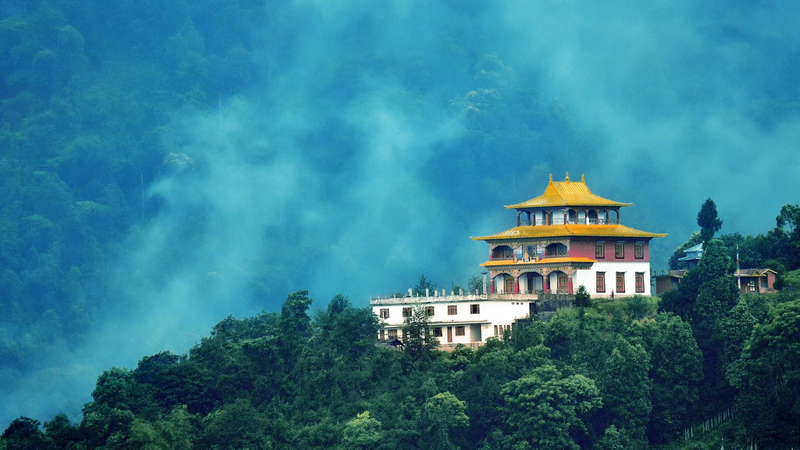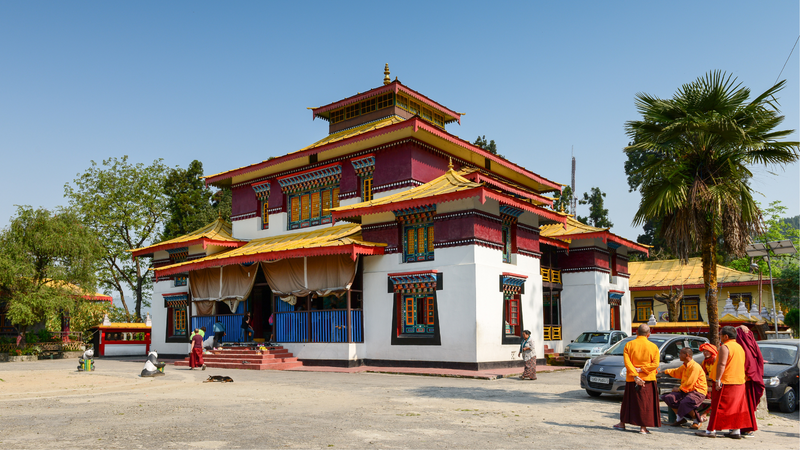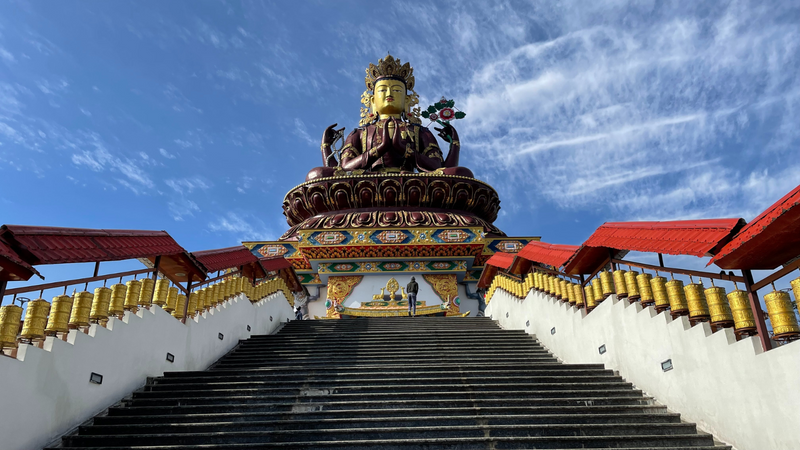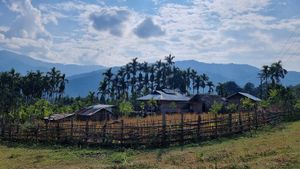One of the most significant religious traditions practised in India is Buddhism. In fact, the religion travelled far and wide across the world from India and became one of the most practised religions in India. Within India, northeast India is at the core of Buddhism and home to several Buddhist monasteries.
As Buddha Purnima comes closer, a festival that marks the birth anniversary of Gautama Buddha, the founder of Buddhism, and is celebrated with great enthusiasm and reverence across the world. The ambience during Buddha Purnima is nothing short of enchanting, with colourful decorations, lanterns, and prayer flags adorning homes and streets. Closer home, in northeastern states of India, people dress in their traditional attire and gather in monasteries and temples to offer prayers and light lamps in honour of the Buddha.
Take a look at some of the must-visit Buddhist monasteries in North East India:
1. Tawang Monastery, Arunachal Pradesh

Tawang Monastery is a famous and the largest Buddhist monastery in India, located in the town of Tawang in Arunachal Pradesh. It is an essential centre of Mahayana Buddhism and is home to around 450 lamas or Buddhist monks. The monastery was founded by Merak Lama Lodre Gyatso in the 17th century and is believed to be one of the largest monasteries in the world.
Tawang Monastery is also known as the 'Galden Namgyal Lhatse', which translates to 'celestial paradise in a clear night'. It is a beautiful place with stunning views of the surrounding valleys and mountains. The monastery is also famous for its rich collection of ancient Buddhist scriptures and artefacts, including the Kangyur, which contains 108 volumes of the Buddha's teachings.
One of the unique characteristics of Tawang Monastery is its annual festival, Torgya, which is held in January every year. The festival is a colourful affair, with monks dressed in traditional attire performing sacred dances, known as Cham. The festival also attracts many tourists.
Entry fee: Free
Timings: 6 am to 6 pm
2. Rumtek Monastery, Sikkim

Rumtek Monastery is a beautiful Buddhist monastery in India located near the city of Gangtok in Sikkim. It is the main seat of the Karma Kagyu lineage of Tibetan Buddhism and is one of the most important monasteries in the region. The monastery was founded by the 16th Karmapa, Rangjung Rigpe Dorje, in the 1960s.
The monastery is a significant centre of Buddhist learning and is home to several valuable relics, including a golden stupa and a statue of the 16th Karmapa. The monastery also houses a large library that contains rare manuscripts and scriptures.
The Rumtek Monastery has truly stunning architecture and is designed in a traditional Tibetan style, surrounded by beautifully landscaped gardens and picturesque views of the surrounding mountains.
Entry fee: INR 10 per person
Timings: 6 am to 6 pm
3. Enchey Monastery, Sikkim

Enchey Monastery is a celebrated Buddhist place of worship, located on a hilltop overlooking the city of Gangtok in Sikkim. The monastery was founded in the 19th century and is an essential centre of the Nyingma tradition of Tibetan Buddhism.
The monastery's beautiful architecture combines traditional Tibetan and Sikkimese styles. The monastery's prayer hall houses a large statue of Guru Rinpoche, the founder of the Nyingma tradition.
Entry fee: Free
Timings: 9 am to 6 pm
4. Phodang Monastery, Sikkim

Located in the town of Phodang in Sikkim, Phodang Monastery is a well-known Buddhist place of worship. The monastery was founded in the 18th century and is a centre of the Kagyu tradition of Tibetan Buddhism. It is home to around 250 lamas or Buddhist monks and is famous for its rich collection of ancient Buddhist scriptures and artefacts.
Entry fee: Free
Timings: 6 am to 6 pm
5. Sangak Choeling Monastery, Sikkim

Founded in the 17th century by Lama Lhatsun Chempo, Sanga Choeling Monastery is located in the town of Pelling in Sikkim and is an important centre of the Nyingma tradition of Tibetan Buddhism.
The monastery is perched on a hilltop overlooking the beautiful Pelling Valley. To reach the monastery, visitors have to trek up a steep path that winds through the forest. The trek is challenging, but the stunning views of the surrounding mountains and valleys make it well worth the effort.
Sanga Choeling Monastery is also known for its annual festival, 'Bumchu', in January or February every year. The festival is a colourful affair, with monks performing sacred dances and offering prayers to the Buddha.
Entry fee: Free
Timings: 8 am to 5 pm
6. Pemayangtse Monastery, Sikkim

Pemayangtse Monastery is located in the town of Pelling in Sikkim. It was founded in the 18th century and is an essential centre of the Nyingma tradition of Tibetan Buddhism. The monastery's name translates to 'perfect sublime lotus', which is believed to represent the purity and divinity of the Buddha. Visitors can expect to see some rare Buddhist scriptures and artefacts housed within the monastery, including a seven-tiered wooden structure that depicts the heavenly palace of Guru Rimpoche.
Entry fee: INR 20 per person
Timings: 9 am to 5 pm
7. Sakyamuni Complex, Manipur
While not a traditional monastery, Sakyamuni Complex is a beautiful Buddhist complex located in the city of Imphal in Manipur. The complex is home to several important Buddhist sites, including the Sakyamuni Temple, the Khwairamband Bazar, and the Imphal Peace Museum.
The Sakyamuni Temple is the most significant site in the complex, housing a large statue of the Buddha. The temple's unique feature is its beautiful architecture, which combines traditional Manipuri and Tibetan styles.
The Khwairamband Bazar is a bustling marketplace located near the Sakyamuni Complex. The market is famous for its colourful handloom and handicraft products, making it a must-visit destination for tourists. The Imphal Peace Museum is also located within the complex and is dedicated to promoting peace and non-violence. The museum houses several exhibits on the life of Mahatma Gandhi, as well as other peace activists and leaders from around the world.
Entry fee: Free
Timings: 6 am to 5 pm
If you liked this list, be sure to read about the largest Buddhist monastery in India.
Disclaimer: The details mentioned throughout this blog are sourced from publicly accessible platforms. At Zeezest, we intend to share factual and verified information. Should there be any inconsistencies or variances in the information provided, please understand that these are entirely unintentional and not meant to mislead.


_1683044489102_thumb_1200.png?w=3840&q=75)
_1682538629098_thumb_300.png)
